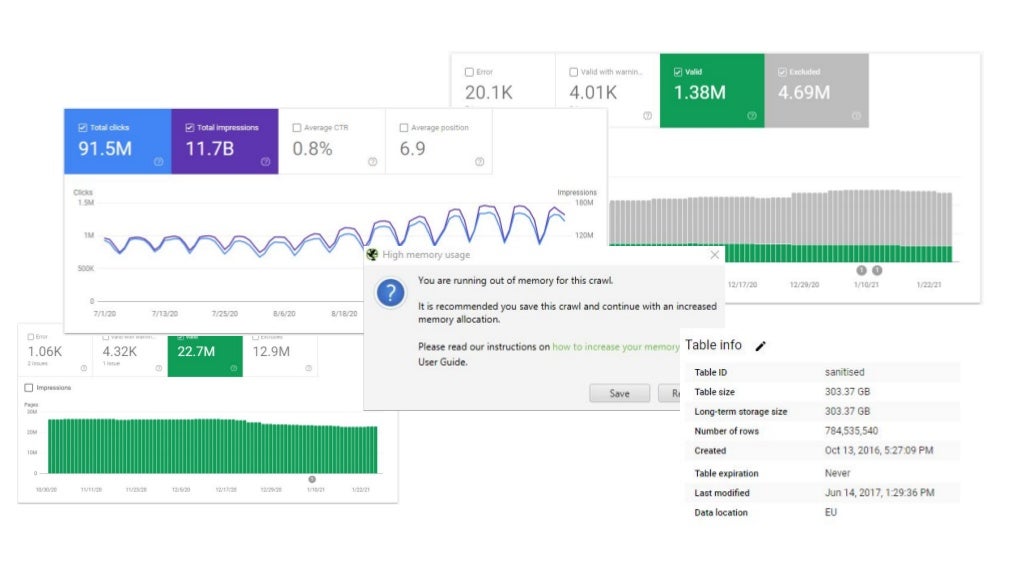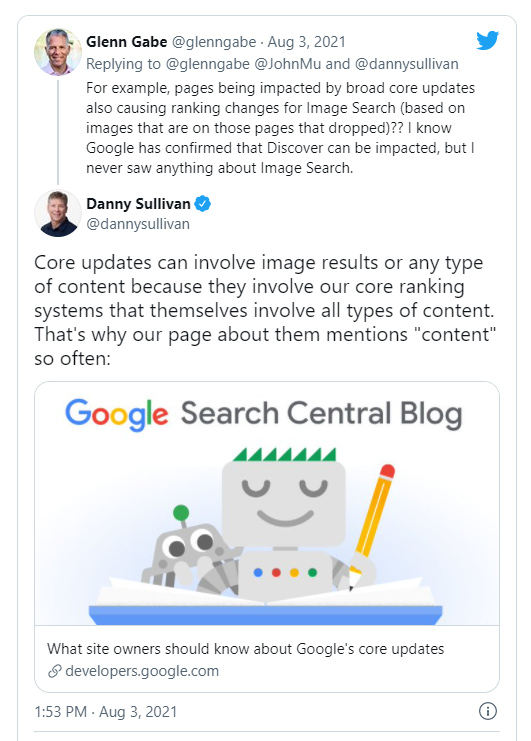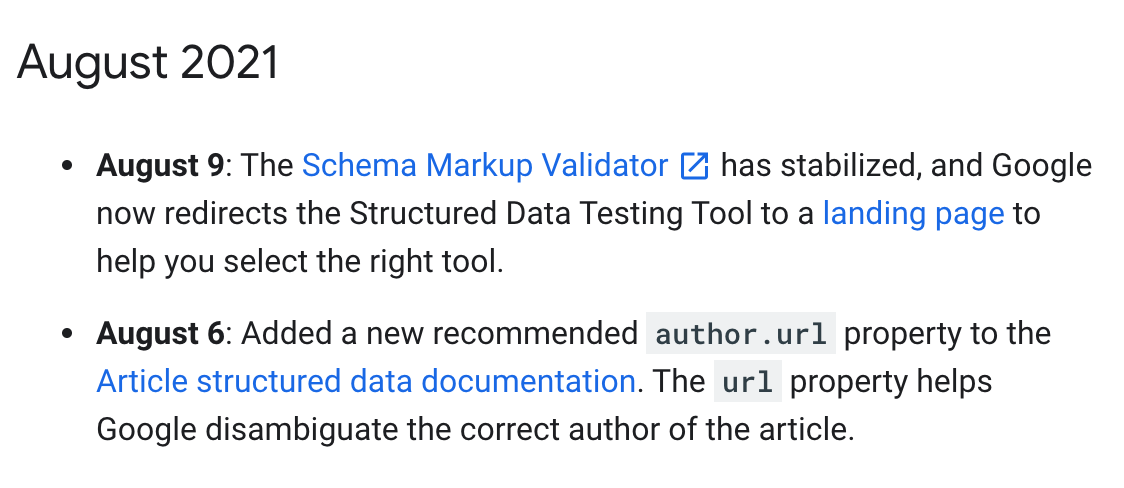Need some fresh momentum after the recent core update? You don’t want to miss this roundup. It’s filled with advice, data, and news that’s ready to be applied directly to your sites.
To begin, you’ll find out the practices one SEO used to sell a young site for six figures. Then, we look at a presentation on how SEO changes for large sites and a simple flowchart you can use to know when to use a canonical.
Next, we’ve got a set of highly actionable data studies. The first one defines the characteristics that are most likely to make your content perform in Discover. Then, we look at a deep dive on why Wise.com stays winning in SERPs and another study on how updates affect image search.
We’ll close on the news. Google has announced they now recommend declaring authors in markup and that they’ll now show why specific search results were ranked. Finally, we’ll look at whether a coming WordPress update has the power to boost the core web vitals of a WP site.
(Thread) How I Sold a 10-Month Old Website for Six Figures
https://twitter.com/TedFrench/status/1425414187455496194
Fellow Affiliate Lab member, Ted French brings us this popular Twitter thread on the practices he used to sell a website for six figures (a $200,000+ profit) after only ten months of SEO work.
As he explains in the thread, he has been working on niche sites since 2015. The sites that he develops are mainly monetized with affiliate links or display ads. Like some of his recent sites, the domain for this guide was purchased at auction right after its registration expired.

Ted doesn’t discuss the site’s niche but lets us know the metrics he used to choose this site from the auction. He values “big daddy” links more than DA, DR, or other scores. This site happened to have some, and it became the basis for his work.
He details all of his steps after taking possession of a site that fit his needs, including:
This short thread contains insights on basically all the big decisions you’d make between getting a site and making it pay. The next guide in line is going to focus on large sites rather than small ones.
SEO for Large Websites (Presentation Writeup)
https://www.domwoodman.com/posts/seo-for-large-websites/
Dom Woodman brings us this look at how SEO changes when working with large/enterprise sites. He lays out the new tools that you’ll need to manage and maintain large sites.

His advice covers:
This advice is covered comprehensively in the article, complete with examples of template sheets and links to all the tools. It’s essential reading if a large site is challenging you.
Our next guide is a bite-size cheat sheet on when to use a canonical, but it inspired a lot of goodwill from even experienced SEOs when it was released.
(Infographic) Should I Use a Canonical?
https://twitter.com/SEOWorksUK/status/1420048645374754818/photo/1
Billie Geena brings us this quick breakdown of the decision flow to follow when using a canonical. The chart starts with a look at two pages being compared to one another. The chart then flows through all the decisions you’ll need to make to find the correct answer.
You can access the infographic, the tweet above, or through the image link here.

I think this graphic could make an excellent bookmark for anyone who has trouble getting this decision out of the way quickly. The flow covers almost any issue that could leave you with analysis paralysis and takes you to the next decision.
Now that you’ve picked up some things from the guides that came out this month, let’s jump into the case studies. We’ll start with a data-backed look at why content performs on Google Discover.
Google Discover: 10 Characteristics of Top-Performing Content [Study]
https://www.searchenginejournal.com/best-google-discover-content/414620/#close
Lily Ray brings us this look at the common characteristics of content that thrives on Google Discover. The study analyzed 7,200 URLs to determine what optimizations are shared by the top-performing pages.

Based on the data, she revealed the following ten characteristics that you can apply to your content:
Check out the full guide for more information on how each of these characteristics is defined and to see examples of how they appear in SERPs. Our next item will deep-dive into one particular site and how it has maintained its power in SERPs.
Wise.com SEO Case Study: 5 Reasons Why Their SEO Rocks
https://ahrefs.com/blog/wise-seo-case-study/
Michal Pecánek brings us this in-depth look at how to do SEO right, with Wise.com as an example.
Wise.com is a financial tech company that manages international money transfers. This is a highly competitive niche, but Wise has carved out a position that nets the site nearly 6.5 million visits a month.

Using Ahref readings, Michal took a crack at identifying what put this site in such a powerful position. He tied their strength to some of the following practices:
His study looks at these practices in detail, shows how they appear in the data, and provides image examples. There’s enough detail that you could easily steal their mojo and put it to work on your site.
Our final data study piece looks at some of the fringe readings from the core update and seeks to answer the question: Can core updates impact image search rankings?
Google Broad Core Updates and Image Search: Can core updates impact Image Search rankings in addition to Web Search and Discover?
https://www.gsqi.com/marketing-blog/
Glenn Gabe of GSQi takes us through this look at how core updates can affect image search rankings. He started looking for the answer after fielding a technical question on Google. However, Glenn was surprised enough by the scope of what he found to do a fuller writeup.

He starts with a refresher on how Google ranks images in the first place. He explains that ranking in image search is mostly tied to landing page combinations. That means (roughly) Google may rank images based on how well the hosting page gives context to those images.
Glenn argues that this relationship could explain why a surprising amount of image search movement was recorded in the brief analysis. He provides several examples of sites that were hit, and sites that were not—theorizing that the hit sites may have lost SERP features.
Danny Sullivan of Google dropped into the conversation at one point to clarify that, yes, core updates may hit image results or any other type of content.

Glenn closes with some advice on how to check if your site has been impacted. You should check out the rest of the piece to learn more about how to spot hits to your images rankings and how to recover.
With the last case study out of the way, we’ll move to the news. We’ll start by looking at what it means that Google is now recommending authors be declared in markup.
Google Recommends Declaring Authors in Markup
https://www.sistrix.com/blog/who-wrote-that-content-google-recommends-declaring-authors-in-markup/
Johannes Beus of Sistrix brings us this quick look at what it means that Google wants authors to be declared in markup. This follows the Aug 6th introduction of the new author.url property.
The new property was released to give SEOs the chance to help Google determine the correct author of a given article. While Google has done a lot of work to detect authors automatically, this new change will allow site owners to push for recognition more directly.

As Johannes points out, this effort doesn’t have the best track record. Both the Google+ channel and the Rel author tag were released to meet this same need. Both were discontinued shortly afterward.
Whether this new property sticks or not, some SEOs may benefit from being early adopters. Some site owners in YMYL-niches depend on recognized authorship to rank and will probably benefit from getting on board with new initiatives as soon as possible.
Google Now Shows Why It Ranked a Specific Search Result
https://searchengineland.com/google-now-shows-why-it-ranked-a-specific-search-result-350659
Barry Schwartz of Search Engine Land brings us this surprising move by Google to reveal what ranking factors allowed sites to reach the top of SERPs.

The feature, covered in this official release, expands the “about this result” box to identify the factors used to deliver the result. For example, when you perform a search, this box may now tell you:
It’s not hard to understand why SEOs might be excited about this change. While this box may not share detailed data about weights and signals, it may provide driven SEOs with a more precise game plan to target the results above them.
This feature is already rolling out and estimated to appear in 100% of US searches by the end of August.
WordPress 5.9 May Boost a Core Web Vitals Metric by Up to 33%
https://www.searchenginejournal.com/wordpress-core-web-vitals-boost/413627/#close
Roger Montti of Search Engine Journal has some news for us about a WordPress update that could save a lot of time. WordPress is one of the most widely used CMS systems globally, and their next update may boost the core web vitals of millions of sites using it.

The change being discussed would alter the default loading behavior of themes. They will now front-load important elements like the feature images. Frames and other features could be limited or prevented from loading if the user’s browser wasn’t actively displaying them.
This mostly affects the Largest Contentful Paint measure of the Core Web Vitals. Users would both experience and perceive faster loading, and the score would be affected as a result.
Developer tests on popular themes show that the LCP score can increase by an average of 7% when the new method is tested. Some themes experienced a 33% better improvement in LCP score.
In the article, you’ll find a link to a new plugin patch that a WordPress dev has already launched for you to test this feature out on your own site. For the rest of you, this change will come in a free update.
Got Questions or Comments?
Join the discussion here on Facebook.

